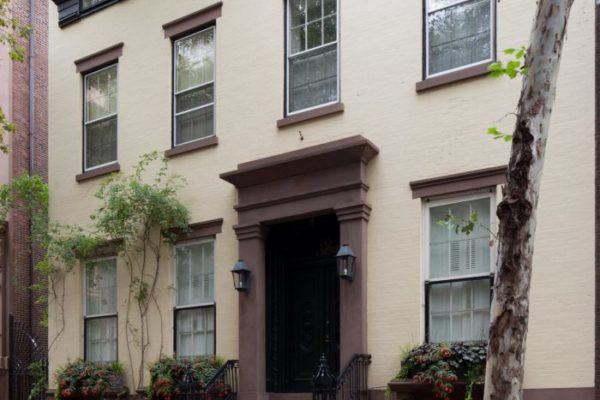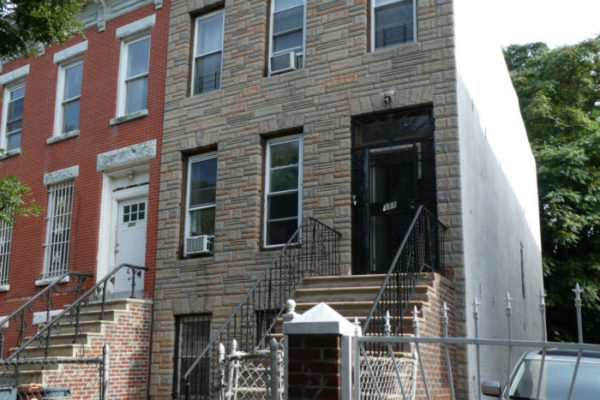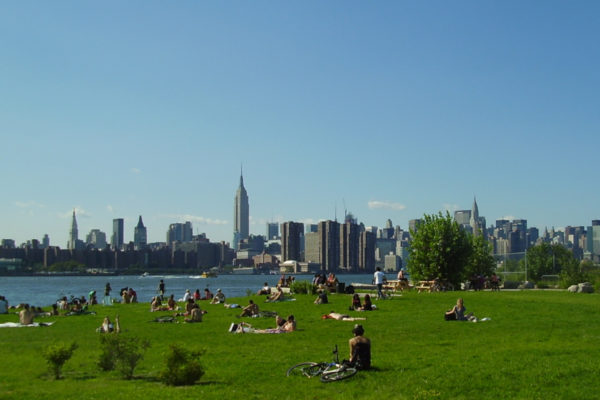
Charles Lockwood Residence
overview
Author Charles Lockwood purchased this Fort Greene brownstone rowhouse in 1970 and lived here until the mid-1970s.
During this period, he wrote his pioneering rowhouse study, Bricks and Brownstone: The New York Row House, 1783-1929, published in 1972.
On the Map
VIEW The Full MapHistory
In 1969, when Charles Lockwood (1948-2012) was preparing to write his senior thesis at Princeton, he asked a librarian for a book on the history of New York City’s rowhouses and was told that it had not yet been written. He set out to correct this and Bricks and Brownstone: The New York Row House, 1783-1929 was published in 1972. It is still the authoritative history of this quintessential New York house type.
As David W. Dunlap wrote in Lockwood’s New York Times obituary, the book “both chronicled and furthered the row-house revival that transformed many New York neighborhoods.” The book provides a stylistic history of the rowhouse that is especially strong in its analysis on the early and mid-19th century. Significantly, Lockwood went beyond style to place rowhouses within the evolving social and technological history of the period.
In 1970, Lockwood purchased the grand c. 1869 brownstone-fronted Italianate style house at 15 South Oxford Street in the Fort Greene neighborhood of Brooklyn. This house had sold for about $30,000 in 1869, but was purchased by Lockwood for $21,000, an indication of how urban rowhouse living had declined in popularity. His book was highly influential in reviving interest in these houses.
In the mid-1970s Lockwood moved to Greenwich Village, renting an apartment at 63 Perry Street, where he wrote his next major book, Manhattan Moves Uptown. His research assistant on this book was Alexander Cassie who went on to become a leading preservation advocate in Boston. In about 1979, Lockwood moved to California, first to San Francisco and then to Los Angeles, writing books about the architecture of both of these cities. He returned briefly to New York in the 1980s, living at 115 East 9th Street. He was photographed in front of Trinity Church in 1987 at the first ACT UP demonstration on Wall Street, wearing a shirt that read “cruise men not missiles.”
After leaving New York, Lockwood wrote dozens of articles on architecture for national newspapers and magazines, became a real estate consultant, and then served as an advisor on corporate sustainability issues. He died in Los Angeles in 2012.
Entry by Andrew S. Dolkart, project director (April 2024), with thanks to Patrick Ciccone, co-author of the third edition of Bricks and Brownstone, for his assistance.
NOTE: Names above in bold indicate LGBT people.
Building Information
- Architect or Builder: William A. Brush, builder
- Year Built: c. 1869
Sources
Charles Lockwood, Bricks and Brownstone: The New York Row House, 1783-1929 (New York: McGraw-Hill, 1972; second edition, New York: Rizzoli, 2003; third edition co-authored by Patrick Ciccone with Jonathan D. Taylor, New York: Rizzoli, 2019).
David W. Dunlap, “Charles Lockwood, 63; Wrote Row-House Bible,” The New York Times, April 2, 2012.
Do you have more information about this site?
This project is enriched by your participation! Do you have your own images of this site? Or a story to share? Would you like to suggest a different historic site?








